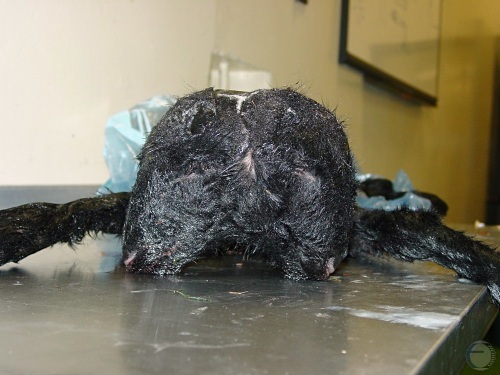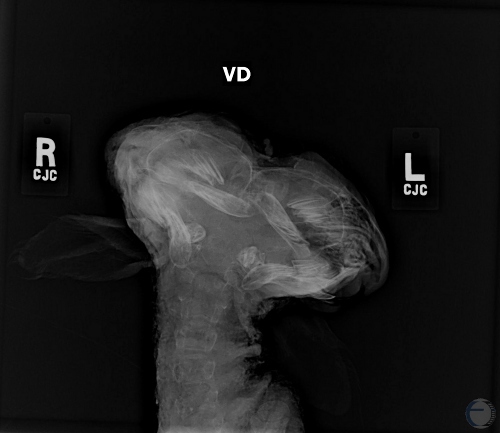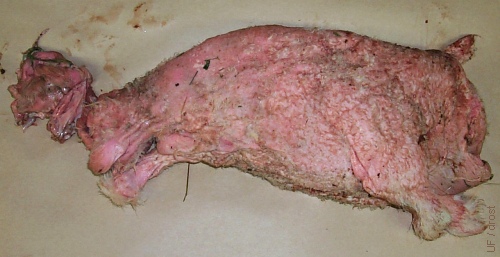The Visual Guide to
Ovine Reproduction
Teratology: Fetal Monsters
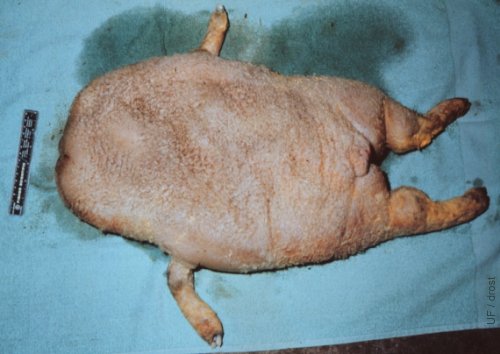
Acephalic Anasarcous Monster.
This 9 kg fetal, acephalic, anasarcous monster was born twin to a normal ram lamb. It was attached to the placenta of the twin. The edematous monster had no head, no heart, and no lungs.
Roberts SJ (1973)
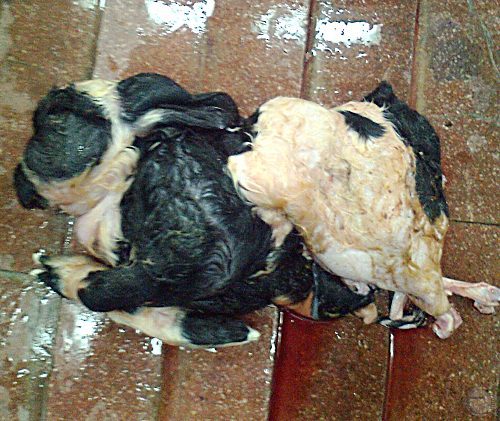
Fetal Anasarca.
Fetal anasarca or excessive edema of the fetus may be accompanied by mild hydrops of the fetal membranes and edema of the placenta. It is the result of a general infiltration of clear watery fluid into the subcutaneous connective tissue.
Mogheiseh A (2013)
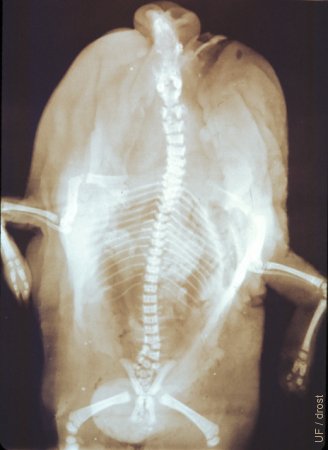
Acephalic Holocardius Monster.
Radiograph of a 9 kg fetal monster, born twin to a normal ram lamb. It was attached to the placenta of the twin. The edematous monster had no head, no heart, and no lungs.
Roberts SJ (1973)
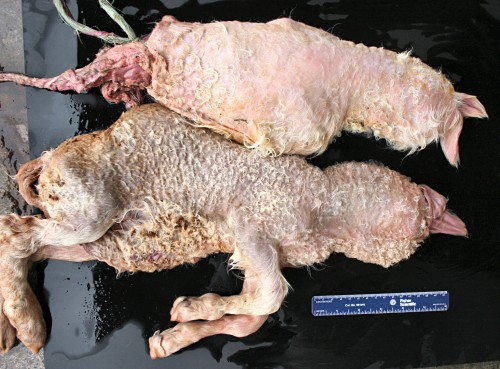
Otocephaly.
Intact skulls are missing in these twin lambs. Only neck and ears are present, no eyes, no mouth.
Smith MC (2008)
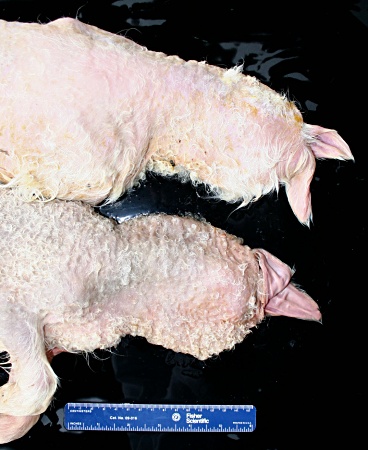
Otocephalic Twins - Close Up.
Normal skulls are missing in these twin lambs. Neck and ears are present. Functional pituitary glands also had to be present to trigger the onset of parturition.
Smith MC (2008)

Otocephaly - Close Up.
No eyes, no nose, no mouth, no intact skull.
Smith MC (2008)

Otocephaly - Close Up.
No eyes, no nose, no mouth, no skull per se. A pituitary gland had to be present to trigger parturition.
Smith MC (2008)

Bicephaly.
The single lower part of the esophagus of the bicephalic lamb bifurcated into the two heads.
Villarroel A (2013)
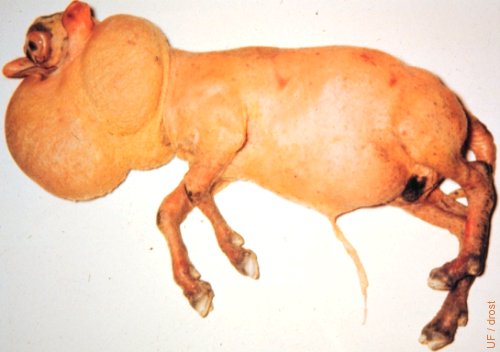
Cystic Esophagus 1.
Lateral view of a female twin lamb that had a cystic esophagus and no mandible.
Roberts SJ (1973)
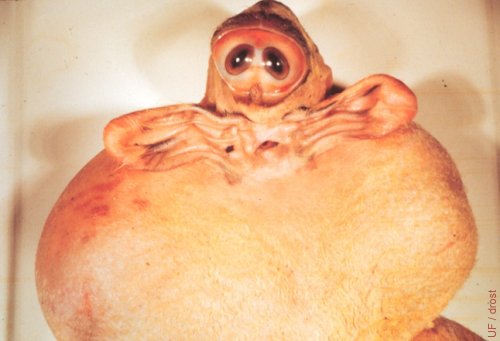
Cystic Esophagus 2.
Frontal view of a female twin lamb that had a cystic esophagus and no mandible. The eyes are closer than normal.
Roberts SJ (1973)
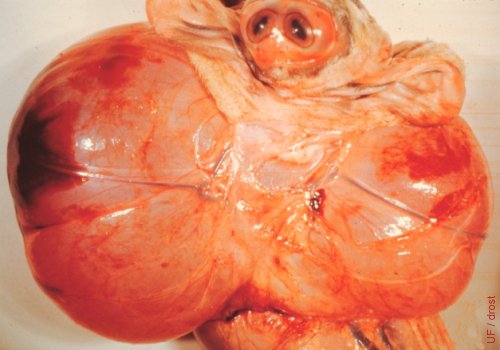
Cystic Esophagus 3.
Frontal view of a female twin lamb that had a cystic esophagus and no mandible. The skin has been removed.
Roberts SJ (1973)
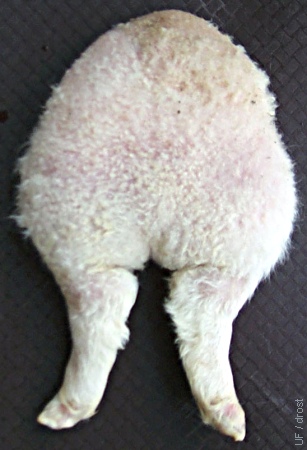
Amorphus Globosus 1.
A shapeless mass consisting of all three primary germ cell layers. The head, neck, chest, and forelimbs are missing. Not a classical globosus amorphus which is a mere sphere with an umbilical cord.
Smith MC (2006)
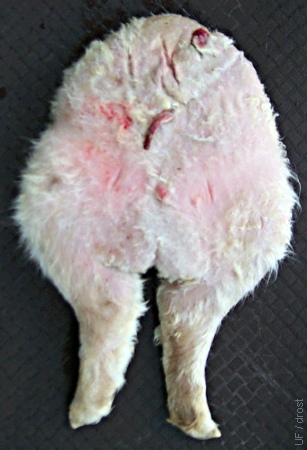
Amorphus Globosus 2.
A functional umbilical cord is present and, near the top of the image, vestiges of a mouth appear to be present.
Smith MC (2006)
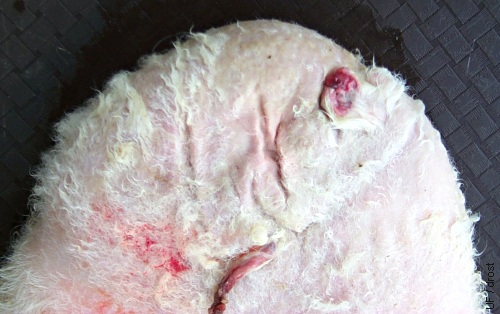
Amorphus Globosus 3.
Close up of the umbilical cord and the vestiges of a mouth of an amorphus globosus.
Smith MC (2006)
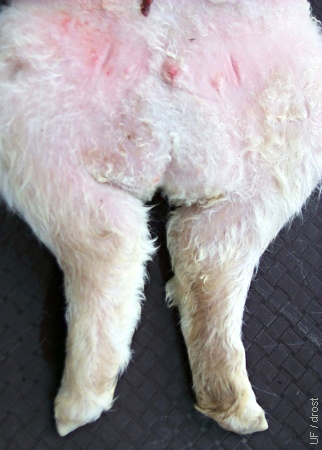
Amorphus Globosus 4.
The appearance of hocks identifies the two legs as hindlegs. Above the hocks is the early outline of a scrotum.
Smith MC (2006)
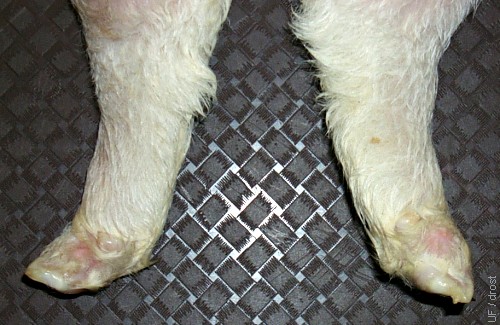
Amorphus Globosus 5.
The feet of this globosus amorphus have single digits. This condition is called syndactyly, or mule foot.
Smith MC (2006)
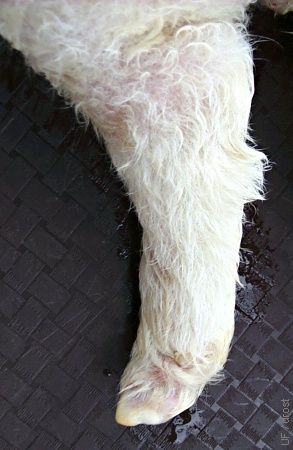
Amorphus Globosus 6.
The legs ends in a single digit (mule foot, syndactyly).
Smith MC (2006)

Incomplete Fetus.
Fresh, born as a co-twin. Ventral view showing incomplete closure of the abdominal wall.
Smith MC (2006)
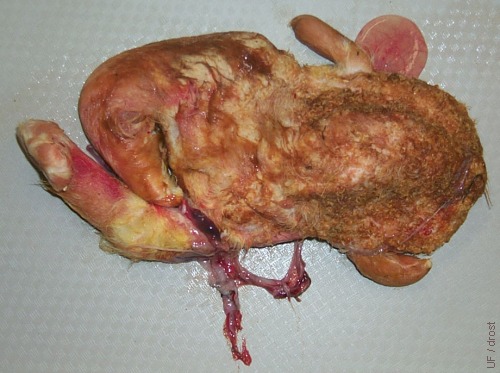
Incomplete Fetus.
Fresh, born as a co-twin. Incomplete development. Etiology unknown.
Smith MC (2006)

